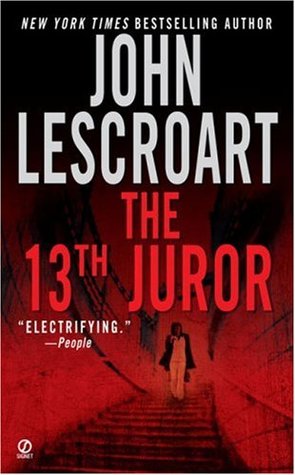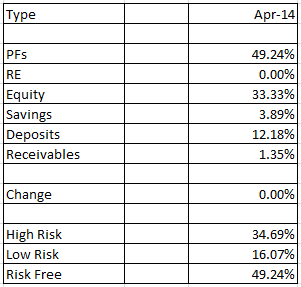- The Black Prism
- The Blinding Knife
- The Broken Eye
- The Blood Mirror
The Broken Eye was recently released, in August 2014, which leaves us with only the series finale book unpublished. Judging by the frequency with which the 3 books were launched, I suspect it will be a 2-year wait before the final book is out.
The Lightbringer series is quite well written with an appropriate mix of sarcasm, comedy, and strategy, slightly short on action and a tad extra bit of drama and magical history. The number of characters introduced in just right, no extra characters which suddenly drop off later in the book and no unnecessary introductions that seem to waste your reading time. Suffice to say, you won't stop unless you are done with all the books. Thinking it to be a trilogy, I read through the books at breakneck speeds, only to find that Brent Weeks will be launching another book to complete the story. Pretty harsh considering I have to wait 2 years to finish this series.
The humor is amazing - witty, wry, sarcastic, that is bound to make you laugh out while reading the books. The action is intense when it occurs, but I feel this is slightly rare for the sort of book it is. It's possible that we'll see quite a bit of it in the final book(fingers crossed). Brent's description of action scenarios are amazing and it's just a little disappointing to find so few of those in the 3 books. At times, I felt that he discussed details about the historical and theological aspects associated with the fantasy world, and although it's not bad, but it didn't align with the environment created in the book - he could have discussed some other aspects in my opinion. There are bits and pieces of drama packed in too and it is just in the right amount at the right stages of the book. This was deftly handled by him.
In the fantasy world created by Brent Weeks, some people, called drafters, can use light to perform magic (creating and using material called luxin). Since light has different spectral components, different types of luxin can be created and hence different sorts of magic pertaining to these colors. It is believed that this ability is provided by a God, called Orholam. From here on out, there are similarities with any other religion or its consequences. For example, since there can be different interpretations of a God's will, there will be multiple factions with varying faiths, which causes wars. You will find equivalents of Prophets, Seers, Popes etc. in the book too, except there's magic involved :). I'd say it's a great series to read and you'll find your time to be well spent.
I'll provide a book by description below. If you haven't read any of the books, you might want to avoid the section below. If you are returning to a book from the series after a long hiatus, you might want to take a look to jog your memory so you can proceed with the series. Needless to say, there will be SPOILERS below.
The Black Prism
The first book follows the story of Kip, the bastard son of the Prism Gavin Guile. His town is attacked by the King of his province, Garadul and he manages to escape, in the process discovering that he is a drafter. He is later found by the Prism Gavin(who is in fact Dazen Guile - the real Gavin Guile is held prisoner by Dazen in a cell under his apartment) and Karris White Oak, a member of the Blackguard, who take him to Chromeria. Here, he begins learning drafting under Liv(Aliviana Danavis). The attack on Kip's town signals an oncoming war and the Prism attempts to direct the Spectrum to head out to war before the enemy grows strong, but this plan fails. So, the Prism, along with Kip, Ironfist(Blackguard Commander) and Liv head out to defend the first city expected to be besieged by King Garadul. The Prism enlists the help of his friend from the False Prisms' war, General Corvan Danavis, to protect the city. With the help of other drafters, the Prism builds a wall made entirely out of luxin, around the city, but King Garadul and his army manage to breach the wall. When Kip learns that Karris is hostage to King Garadul, he heads out to infiltrate their camp and rescue her, in order to repay his father Gavin for his kindness. He is helped by Liv in this attempt. Although his attempt at infiltration fails, he is aided by Ironfist later to make his escape with Karris, however Liv gets caught and is held by the Color Prince(Koios White Oak, who was thought to be killed in a fire, at the hands of Dazen). The battle between King Garadul/Color Prince and the Prism continues at Garriston, leading to Garadul's death at the hands of Kip. However, the Prism loses due to the overwhelming power of the Color Prince and his drafters and they escape by sea, with an entire city's residents in tow. During this escape attempt, the Prism gets stabbed(by the Blinding Knife) for a brief moment by Zymun in the back and then Kip throws Zymun overboard. The book ends with Gavin breaking out of the blue prison and ending inside the green one, while Dazen loses the ability to draft blue. Karris figures out that Gavin is, in fact, Dazen.
The Blinding Knife
The Prism sends Kip with Ironfist to Chromeria to become a Blackguard, while he heads out to Seers Island to create an establishment for the refugees from Garriston. He speaks with the Seer on the island and heads out to search and destroy the blue bane(drafters/wights with great power over that color in a huge area around them). Meantime, Kip is in Chromeria, attending Blackguard classes and training. However, Gavin's father, Andross Guile(Red member of Spectrum) is judging Kip's potential and playing Nine Kings with him with stakes. Since Kip doesn't know the game, he ends up losing most of the times(in spite of studying the game in the library) until he meets a Mirror, Janus Borig, who teaches him about the game and the cards, their origins etc. Kip finds that the original cards made by the mirrors have memories and are powerful artifacts. Gavin returns, but has lost the green color(prisoner Gavin escapes green prison and ends up in yellow), and rallies the Spectrum for war. He kills his brother in the yellow prison and marries Karris. The green bane is forming at the next battle point, near Ru. The Color Prince captures Ru and sheds green light on the green bane. This strongly empowers them. The Prism and Ironfist form two groups, one to defeat the bane and other to capture the Ru fortress. The Prism, Karris and Kip attack the bane and manage to defeat it with Ironfist's team attacking it with cannon shells. Kip's use of the Blinding Knife removes the drafting ability of the wights and bane and thus helps them defeat it. When the teams return back to their ships, Kip realizes that Andross Guile is a wight and attacks him with the Knife during an argument between Andross and Gavin. He briefly stabs him, when a tussle starts between Andross, Kip, Gavin and Grinwoody, leading to Gavin getting stabbed with the Knife and falling overboard into the sea. Kip jumps in to rescue Gavin but they both get captured by Gunner. Gunner grabs the Knife(which looks like a musket-sword) and throws Kip overboard, only to be captured by Zymun(Kip's half-brother, Karris' son). Andross is no longer a wight but Gavin is totally color-blind.
The Broken Eye
Gavin is a slave on Gunner's ship and his job is to man the oars. After a long span of time on the oars, he is rescued by Antonius Malargos and taken to Eirene Malargos. He is held captive there and tortured by Eirene and the Nuqaba. The Knife is held by one of the oarmates who was freed during the rescue. Meantime, Kip escapes from Zymun and finds his way back to Chromeria, where he makes peace with Andross. White employs Karris to be her spy and relinquishes her of Blackguard title/duties. Kip trades information on Zymun with Andross in exchange for sending scouts out to look for Gavin and access to restricted libraries. A great deal of the book now focuses on Kip reading in the library with his squad(about Lightbringer, history, theology etc.), personal training with Karris and training in the Prism's practice room. The Order of the Broken Eye recruits Teia as a spy due to her paryl drafting abilities. She speaks to the White and becomes a double agent. The book deals with her exploits with the Order. During this time, Andross used Murder Sharp to cement his place at the Spectrum and becomes promachos. He also tries to get the Spectrum under his control, through murders, bribes etc. Marissia learns that Gavin is held prisoner by Eirene Malargos and heads out with Ironfist and few other Blackguards to rescue him. While Gavin is being blinded by the Nuqaba, Karris rescues him in a dramatic fashion but he has already lost one eye to a hot iron poker. Once they return to Chromeria, Karris heads back to the Spectrum meeting to find that White is dead, Zymun is Prism-elect and she participates in the ceremony to become the next White. Meantime, Zymun sets the Lightguard against Kip and his squad, who manage to escape with Tremblefist's help(who succumbs grievous injuries). Andross has a deal with Kip which requires him to marry Tisis Malargos and be his spy in their care, for which he will bring him back to Chromeria at a later time. Andross finds that the real Gavin was killed by Dazen and the Prism thus far has been Dazen. He captures Dazen and puts him in the blue color prison made by him. Grinwoody is found to be the head of the Order of the Black Eye and is acting as spy in Andross' household. Ironfist is a spy to Grinwoody and he reports that he believes Kip is the real Lightbringer.















